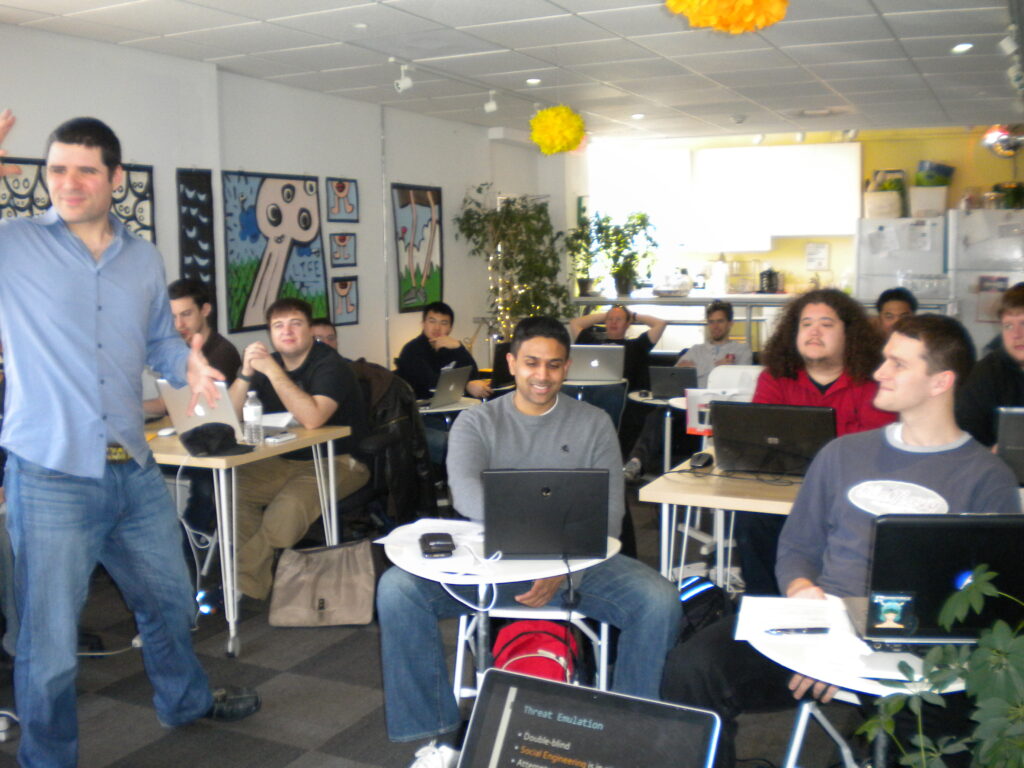I share a lot from my experiences playing on exercise red teams. I talk about the tactics to collaborate, persist on systems, and challenge network defenders in an artificial environment. Armitage was built for this role.
I speak little about my experience working as a penetration tester. I used to work for a security consulting firm providing “red team services to a DoD customer”. My job was threat emulation. My partner and I would plan and execute actions over a long period of time. All of our activities were double-blind. To protect our work, my boss would meet with our contact in a public area set aside for smokers, hand over our plan, and gain approval to execute at that time.
Last October, I was asked by the LASCON organizers in Austin, TX to teach a one day course at their conference. I opted to teach a course on threat emulation. This is when I wrote Advanced Threat Tactics with Armitage. The course briefly introduced Armitage and the Metasploit Framework. A lot of time was spent on how to get a foothold using tactics these tools don’t directly support. The lecture portion ended with two talks on post-exploitation and how to move inside of a network.

The capabilities missing from our tools made up the Advanced Threat Tactics portion of the course. In these three lectures and labs, I taught:
- All attacks start with reconnaissance. How do you perform reconnaissance before a targeted phishing campaign? I introduced the concept of a system profiler and how to build one.
- What do you do if client-side applications are patched? Think like a criminal–you care about the end and not the means. Here, I introduced the idea of hacking with features. It’s important to know how to look at an attack surface and recognize opportunities to get code execution. Sometimes the simple ways work best.
- Once you have an attack, you need to make sure it passes anti-virus. You also need to think about command and control and how you will go through a restrictive firewall. In this portion of the lecture, I introduced students to these ideas and tools available (at the time) to help them with this process.
- Once you have your attack put together, it’s important to package it in a convincing way and get it to your target. Here I taught how to send a pixel perfect phishing message. I made students do these steps by hand. Nothing says fun quite like stripping headers from a message in a text editor and then typing SMTP commands by hand to exchange email with the target’s mail server.
My course helped students think creatively about how to get a foothold in a network and use that foothold to achieve a goal. The missing capabilities in the penetration tester’s toolbox have become the road map for Cobalt Strike.
Fast forward one year later. I’m teaching a two-day Advanced Threat Tactics course at OWASP AppSec USA. The heart of the course is still the same. It’s a two-day opportunity to learn how to think creatively about the hacking process and execute the tactics through several guided labs. The two-day time frame allows me to add a lab and lecture on evading defenses. I have also expanded the post-exploitation and maneuver lectures.